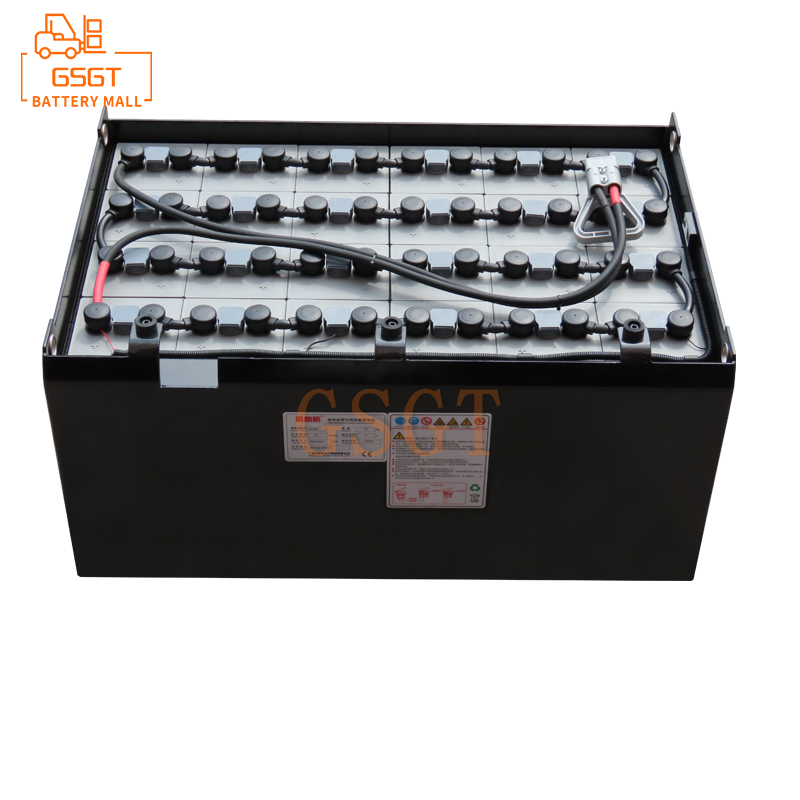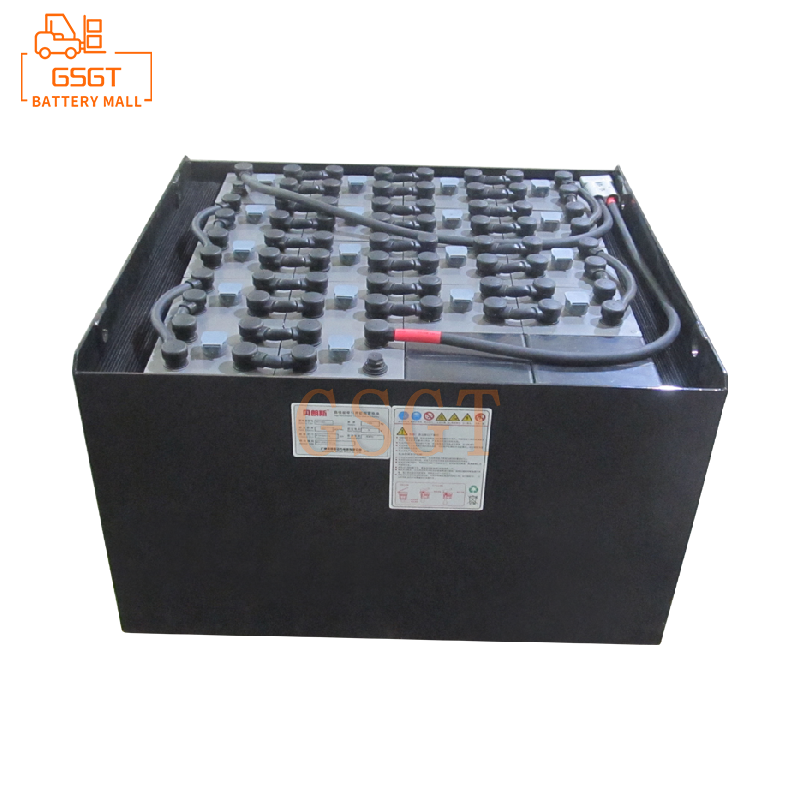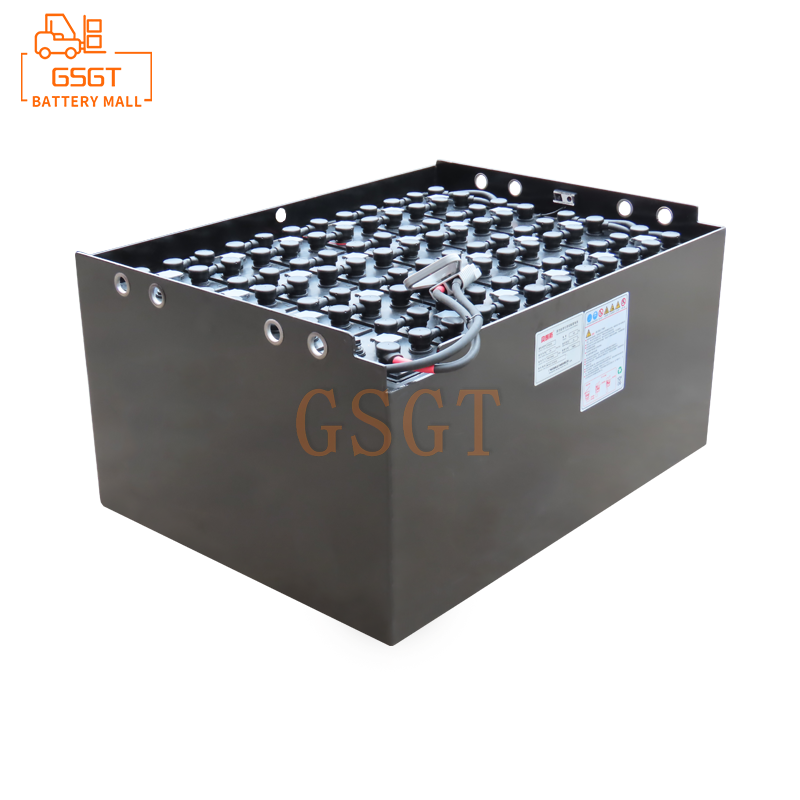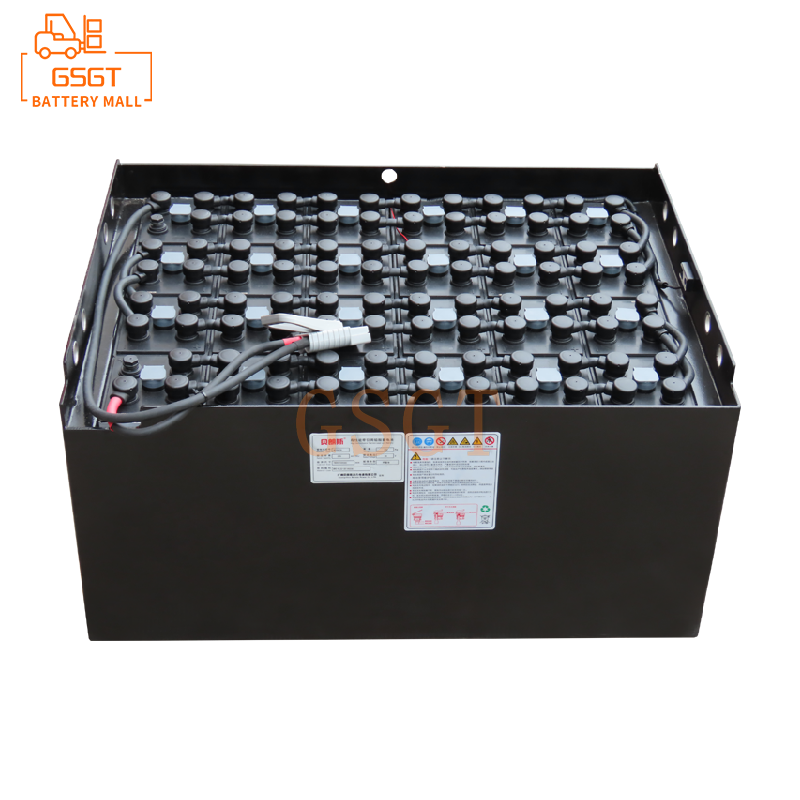Time:2025-06-14 10:46:34
Browse:607
Introduction
In the modern logistics warehousing and industrial production fields, forklifts, as the core equipment for material handling, undertake heavy tasks of loading, unloading and transporting goods. In high-load operation scenarios, forklifts need to start and stop frequently, move heavy objects and work continuously for long periods of time, which poses extremely high requirements for the durability of their power source, lead-acid batteries. The durability of lead-acid batteries not only affects the working efficiency of forklifts but is also closely linked to the operating costs of enterprises. Choosing batteries with poor durability may lead to frequent battery replacement, increase equipment downtime, reduce production efficiency, and also result in high battery procurement costs. Therefore, in-depth research on the durability selection of forklift lead-acid batteries under high-load operations is of great significance for ensuring the efficiency and economy of enterprise production and operation.
Analysis of High-Load Operation Characteristics of Forklifts
The work intensity is high.
In large logistics warehouses or heavy industrial production workshops, forklifts often work for more than 8 hours a day, and even operate continuously for nearly 24 hours under multi-shift systems. For instance, during the peak logistics period after major e-commerce promotions, forklifts in logistics warehouses need to continuously move large quantities of goods from trucks to warehouse shelves or from shelves to sorting areas, with up to dozens of moves per hour. Moreover, forklifts often need to handle heavy objects weighing over 3 tons, and in some special operation scenarios, the weight can even reach over 5 tons. This requires the battery to continuously output a large current to provide strong power, exerting tremendous pressure on the chemical reactions inside the battery and the structure of the plates.
Frequent working cycles
During the operation of forklifts, frequent starts, accelerations, decelerations and braking form a complex working cycle. Each time the vehicle starts up, the battery needs to release a large amount of electrical energy instantaneously to drive the motor to operate the forklift. During the acceleration process, the current demand continuously increases, while there is an electrical energy feedback phenomenon during deceleration and braking. This frequent and drastic change in current repeatedly subjects the internal plates of the battery to high current impacts, which can easily lead to problems such as the shedding and sulfation of active substances on the plates, seriously affecting the durability of the battery.
The operating environment is complex.
Forklifts operate in diverse environments and may encounter harsh conditions such as high temperatures, low temperatures, humidity, and dust. In the high-temperature steel smelting workshop, the ambient temperature often exceeds 40℃. The high temperature accelerates the internal chemical reaction rate of the battery, resulting in a faster evaporation of the electrolyte and intensified corrosion of the plates. In a cold storage environment with low temperatures, the temperature can drop below -20℃. Low temperatures increase the viscosity of the battery electrolyte, raise the internal resistance, significantly reduce the battery capacity, and deteriorate the discharge performance. In addition, humid and dusty environments such as ports can easily cause corrosion of the battery casing and short circuits in the internal circuits, further threatening the normal service life of the battery.
The key factors affecting the durability of lead-acid batteries
Battery plate materials and structures
1. ** Plate material ** : As the core component of a battery, the material of the plates has a profound impact on durability. High-quality lead-acid batteries typically use 1# electrolytic lead as the raw material for the plates, featuring high purity and few impurities, which can effectively reduce the self-discharge rate. Positive grid plates are mostly formed by die-casting reinforced multi-element low-antimony corrosion-resistant alloys, featuring low internal resistance and high-rate discharge performance. They can reduce sulfation and corrosion of the plates and extend the battery's service life. For instance, Lishen lead-acid batteries adopt a high-purity lead-calcium alloy grid design, combined with a porous active material filling process, which increases the contact area between the electrolyte and the active material by 23%, effectively reducing the polarization phenomenon during charging and discharging. Under the condition of 80% depth of discharge (DOD), the cycle life can reach over 1,200 times, extending the service life by 34% compared to traditional products.
2. ** Plate Structure ** : The structural design of the plates is equally important. The plate structure with thick plates and high-density active materials can better withstand the large current impact under high-load operations. For instance, some batteries specifically designed for high-load operations have plates that are 20% to 30% thicker than ordinary plates, and the density of active materials is increased by 15% to 20%. This can effectively reduce the deformation and damage of the plates during frequent charging and discharging processes, thereby enhancing the battery's durability.
Electrolyte characteristics
1. ** Electrolyte Composition ** : The electrolyte is mainly composed of sulfuric acid and water, and the proportion of its components has a significant impact on battery performance. Under high-load operation, an appropriate concentration of sulfuric acid can ensure that the battery has good electrical conductivity and chemical reactivity. Generally speaking, a sulfuric acid concentration of 1.28g/cm³ (at 25℃) is more appropriate. Both excessively high and low sulfuric acid concentrations will accelerate the corrosion of the plates and reduce the battery's lifespan. Some high-performance batteries add special additives to the electrolyte, such as tin (I) sulfate, which can inhibit sulfation of the plates and increase the cycle life of the battery.
2. ** Electrolyte Volume and Retention ** : Sufficient electrolyte volume is the basis for the normal operation of the battery. Under high-load operation, the battery generates a large amount of heat, and the evaporation of the electrolyte accelerates. If the amount of electrolyte is insufficient, it will cause the plates to dry up and accelerate the damage of the battery. Therefore, the sealing performance of the battery and the ability to retain the electrolyte are of vital importance. Batteries with a sealed design can effectively reduce the leakage and evaporation of the electrolyte. For instance, some lead-acid batteries that use colloidal electrolyte have a colloidal electrolyte that is not easy to flow and can remain stable under harsh conditions such as high temperature and vibration, significantly enhancing the battery's durability in high-load and complex environments.
Battery design and manufacturing process
1. ** Battery Design ** : Reasonable battery design can optimize the current distribution and heat dissipation performance inside the battery. For instance, the use of multi-cell independently designed batteries can make the current distribution among each cell more uniform and reduce local overheating. At the same time, optimizing the battery's heat dissipation structure, such as adding heat sinks and designing ventilation channels, can effectively reduce the internal temperature of the battery during high-load operation, slow down the corrosion of the plates and the evaporation rate of the electrolyte, and extend the battery's lifespan.
2. ** Manufacturing Process ** : Advanced manufacturing processes are the key to ensuring the quality and durability of batteries. The high-precision plate coating process can ensure that the active substances are evenly attached to the plates and improve the utilization rate of the active substances. Precise welding techniques can ensure the reliability of the internal connection of the battery, reduce contact resistance, and minimize energy loss and heat generation. For instance, some high-end batteries use laser welding technology to connect the plates. The welding points are firm and have low resistance, effectively enhancing the overall performance and durability of the battery.
Charging and discharging management and usage environment
1. ** Charging and Discharging Management ** : Improper charging and discharging methods can seriously damage battery life. Under high-load operation, frequent deep discharges (with a discharge depth exceeding 80%) will accelerate battery aging. Therefore, it is crucial to choose equipment with an intelligent charge and discharge management system. This system can monitor parameters such as voltage, current and temperature of the battery in real time, adjust the charging and discharging strategies according to the battery status, avoid overcharging and overdischarging, and extend the battery's cycle life.
2. ** Operating Environment ** : Harsh environments such as high temperature, low temperature, humidity, and dust can significantly affect battery durability. Under high-temperature conditions, the chemical reactions inside the battery intensify, the corrosion rate of the plates increases, the evaporation of the electrolyte is large, and the battery life can be shortened by 30% to 50%. In a low-temperature environment, the internal resistance of the battery increases, its capacity decreases, and its discharge performance deteriorates. A humid environment can easily cause corrosion of the battery casing and internal metal components, while a dusty environment may lead to a short circuit in the battery.
Key points for selecting lead-acid batteries under high-load operations
Capacity adaptation
1. ** Operation Duration and Intensity Considerations ** : The battery capacity is determined based on intensity indicators such as the daily high-load operation duration of the forklift and the weight of the goods being handled. If the forklift works for more than 8 hours a day and frequently moves heavy objects weighing over 3 tons, it is recommended to choose a large-capacity battery, such as 48V 600Ah or above, to ensure sufficient power supply and meet the requirements of long-term and high-intensity operations. For light-load and short-term high-load operation scenarios, such as short-term centralized handling in a small warehouse, a 48V 300-400Ah battery can meet the requirements, avoiding cost waste caused by excessive configuration.
2. ** Combination of Charging conditions and strategies ** : If the enterprise's charging facilities are complete and support forklifts to be charged at any time, medium-capacity batteries can be selected to maintain operation through multiple short-time charges, such as 48V 400-500Ah batteries. If the charging conditions are restricted and centralized charging can only be carried out at night, a large-capacity battery should be selected to ensure that the forklift operates under high load throughout the day without power interruption, such as a battery with a capacity of 48V 600Ah or above. At the same time, pay attention to the battery charging duration. Some large-capacity batteries adopt fast charging technology, which can charge to about 80% within 1 to 2 hours, greatly improving the utilization rate of the equipment.
Cycle life and durability
1. ** Cycle charge and discharge Times Index ** : The cycle life of a battery is an important indicator for measuring its durability. Under high-load operation, lead-acid batteries with a high number of cycle charge and discharge cycles should be selected. Generally, high-quality forklift lead-acid batteries can have 800 to 1,000 cycle charge and discharge cycles, and some batteries with advanced technology can even exceed 1,200 cycles. For instance, Lishen lead-acid batteries, by optimizing the plate structure and active material formula, can achieve over 1,200 cycles at an 80% discharge depth, extending their lifespan by 34% compared to traditional products. This enables them to better meet the frequent charging and discharging demands of high-load operations.
2. ** Deep Discharge recovery capability ** : Frequent deep discharges are a common phenomenon during high-load operations, so the battery's deep discharge recovery capability is particularly crucial. Batteries with excellent deep discharge recovery capabilities can maintain high capacity and performance even after multiple deep discharges. For instance, some batteries that adopt special active substance formulas and manufacturing processes can achieve a capacity recovery rate of over 95% even when the discharge depth reaches 90%, after reasonable charging, effectively extending the battery's service life under high-load operation.
Environmental adaptability
1. ** Temperature resistance performance ** : Consider the temperature range of the forklift's operating environment and select batteries with corresponding temperature resistance performance. When working in high-temperature environments, lead-acid batteries with good high-temperature resistance should be selected. These batteries usually use special electrolytes and separator materials, such as colloidal electrolytes and high-temperature resistant separators, which can maintain good performance in high-temperature environments, reduce plate corrosion and electrolyte evaporation, and extend battery life by 20% to 30%. When operating in a low-temperature environment (below -20℃), it is necessary to select batteries with low-temperature characteristics. For instance, by using a special electrolyte formula and plate design, the capacity retention rate and discharge performance of the battery at low temperatures can be enhanced, enabling the battery to still function normally in such conditions and reducing capacity loss by 15% to 20%.
2. ** Moisture-proof, dust-proof and sealing performance ** : For forklifts operating in damp and dusty environments, lead-acid batteries with good sealing performance should be selected. The battery casing adopts a sealed design, which can effectively resist the erosion of moist air and dust, prevent internal short circuits of the battery and corrosion of metal components. For instance, some batteries adopt a fully sealed welding process, with the casing made of engineering plastics that are resistant to corrosion and aging. They can operate stably in humid environments with a humidity of over 95% and in environments with high dust concentrations, and their service life is extended by 1-2 years compared to ordinary batteries.
Conclusion
In the high-load operation scenarios of forklifts, the selection of the durability of lead-acid batteries is a comprehensive decision-making process. It requires a thorough consideration of actual operation characteristics such as operation intensity, operation cycle, and operating environment, as well as key factors affecting battery durability such as battery plate material and structure, electrolyte characteristics, design and manufacturing process, charge and discharge management, and usage environment. By rationally matching battery capacity, paying attention to cycle life and durability, enhancing environmental adaptability, and comprehensively evaluating cost performance, enterprises can select the lead-acid batteries that are most suitable for high-load operation requirements, thereby improving the working efficiency of forklifts, reducing operating costs, and ensuring the efficient and stable operation of production operations. With the continuous advancement of technology, lead-acid battery technology is also constantly innovating and developing. In the future, more high-performance, long-life, and complex-working condition adaptable lead-acid battery products will be launched, providing stronger support for the development of the forklift industry.

$2180

$4220

$5710

$5710

MESSAGE
Professional And Efficient
Security
Affordable Price
Professional Services